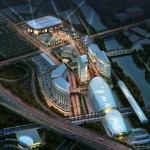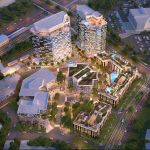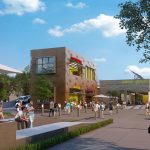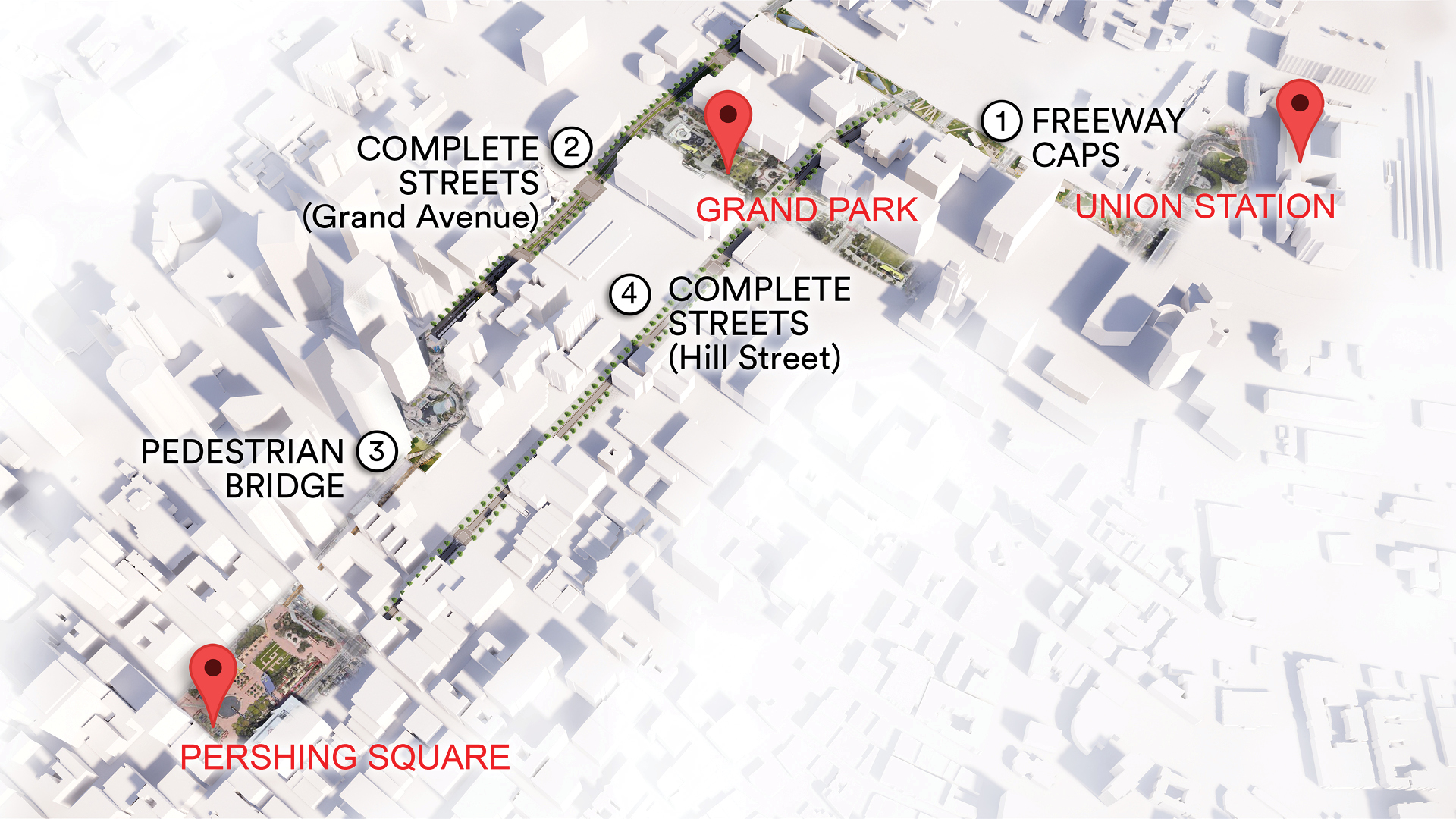The ongoing revitalization of Downtown Los Angeles has fueled an increase in social, economic, and cultural diversity. The existing population of business and governing elite now mingles with millennial creatives, young families, and new entrepreneurs. Additionally, restorations and conversions of many of DTLA’s historic buildings, as well as a surge in new construction, have sparked an influx of forward-thinking companies, energetic workers, and trendy retailers. As DTLA continues to welcome an increasingly collaborative population, there are many exciting ways the area can respond to the shift.
Many community and policy initiatives have already begun to address DTLA’s evolving socioeconomic ecosystem. However, some data indicates an even greater capacity for innovation. For instance, a decline in Los Angeles Metro ridership reveals missed opportunities to shift commuters from private vehicles to bicycles and public transit. Furthermore, extreme growth in the area’s retail market suggests the potential for a more dynamic retail landscape.
Historically, residential components in DTLA struggled, as goods and services were not convenient for potential residents. In 2007, working with The Lee Group and CIM Group, KTGY designed Market Lofts, located at the corner of 9th and Flower in DTLA. The Market Lofts mixed-use development included the first grocery store in DTLA in over 50 years, setting off a chain reaction of both large-scale residential development and extensive investment in moderate and high-end restaurants and retail services.
What is a Complete City?
A Complete City focuses on enhanced urban experiences for all users within every element of the cityscape, from sidewalks to rooftops. Complete City principles include identifying and innovating opportunities for greater urban safety, wellness, vibrancy, connectivity, and accessibility. The applications of these principles will look different in every city depending on the unique issues and needs of the area.
KTGY’s R+D Studio utilizes Complete City principles to reimagine an area of DTLA known for its public attractions and burgeoning walkability. Even with considerable new and planned development, the originally spacious layout of the city struggles to provide meaningful connections between prominent points of interest. The Complete City Los Angeles concept focuses on strengthening those connections by strategically implementing a variety of enhancements to the existing city infrastructure, connecting key nodal points with pedestrian-friendly, experiential outdoor spaces.
Destination-Worthy Connections
Responsive design strategies promote connectivity, public health, and equity in community development by focusing on the public spaces and pathways that knit together the urban fabric of historic landmarks and new development, creating an enhanced experience for both visitors and residents of DTLA.
The Industrial Revolution in the late 18th and early 19th centuries spurred the shift to a majority-urban American society. As American cities confronted increasingly higher densities, revolutionary progress in infrastructure, services, and governance aimed to address the changing urban form. However, some changes were not adequate to support the rapidly growing populace. The rise of slums, traffic, and pollution are just a few examples of how many cities have failed to adequately adapt to people’s needs.
Rapidly growing cities often suffer from gross income inequality, insufficient housing supply, and slow transit growth. As more and more people continue to move to cities, it is increasingly important to imagine how cities must transform to support people.
The founding of DTLA, coinciding with the Industrial Revolution, embraced Western culture’s love of personal transportation, initially a horse-drawn wagon or carriage. As Los Angeles developed into a series of suburbs and cars were introduced, an extensive system of streets and freeways led to sprawling development that spanned farther than most other highly populated cities.
With construction cranes dotting the Los Angeles skyline, residential towers continue to rise. Additionally, museums, parks, schools, hotels, retail, healthcare, and other public destinations continue to make DTLA increasingly more attractive to visitors and future residents. However, even with considerable new and planned development, the originally spacious layout of the city struggles to provide meaningful connections between prominent points of interest. The Complete City Los Angeles concept embraces the recent cultural shift away from personal vehicles and focuses on walkability and other forms of shared and sustainable transportation.
Freeway Caps: 101 Freeway
Freeway caps covering the 101 Freeway between North Los Angeles Street and South Grand Avenue in DTLA aim to combat pollution and bring the community together over education, agriculture, and leisure. Programming includes a farmers market, farm-to-table restaurants, an education center, and greenhouses.
Complete Streets: Grand Avenue
The Complete City Los Angeles concept restricts vehicular flow on Grand Avenue where increased pedestrian, public transit, and bicycle circulation calls for greater safety and health precautions. Inspired by the Complete Streets movement, KTGY’s reimagination of DTLA’s Grand Avenue aims to not only promote safety for all types of users, but to also combat traffic pollution with urban greenery and to make streets more social for the growing DTLA population.
Pedestrian Bridge
A pedestrian bridge connecting California Plaza, adjacent to the Museum of Contemporary Art, with Pershing Square provides a pedestrian connection between major points of interest. At the same time, the unique architectural structure encourages visitors to engage with the space through a variety of seating, planting, and lighting features. Elevated views of DTLA and intermittent seating and gathering areas expand the function of the pedestrian bridge to transform it into a downtown destination.
Complete Streets: Hill Street
According to Smart Growth America, designing solely for decongestion often creates streets that are dangerous by design. Between 2005 and 2014, in the United States, an average of 13 pedestrians per day were struck and killed by vehicles. Additionally, in 2017, motor vehicle collisions caused 783 bicyclist fatalities. Certain design elements can contribute to the prevention of pedestrian and bicyclist fatalities, as well as the increased enjoyment of those experiencing the pathways.
A study conducted by RedFin concluded that fewer than 2 percent of listings boast a Walk Score of 90 or higher, even though walkability is one of the most requested features by potential buyers. They found that a single Walk Score point can increase home values by an average of $3,250 (or 0.9%). The value of an increased Walk Score escalates as the score increases, particularly in metropolitan areas. For example, homes in Los Angeles experience a $129K premium for offering a Walk Score between 60 and 80. Areas with high Walk Scores have also been linked to lower rates of obesity and other positive effects on public health.



